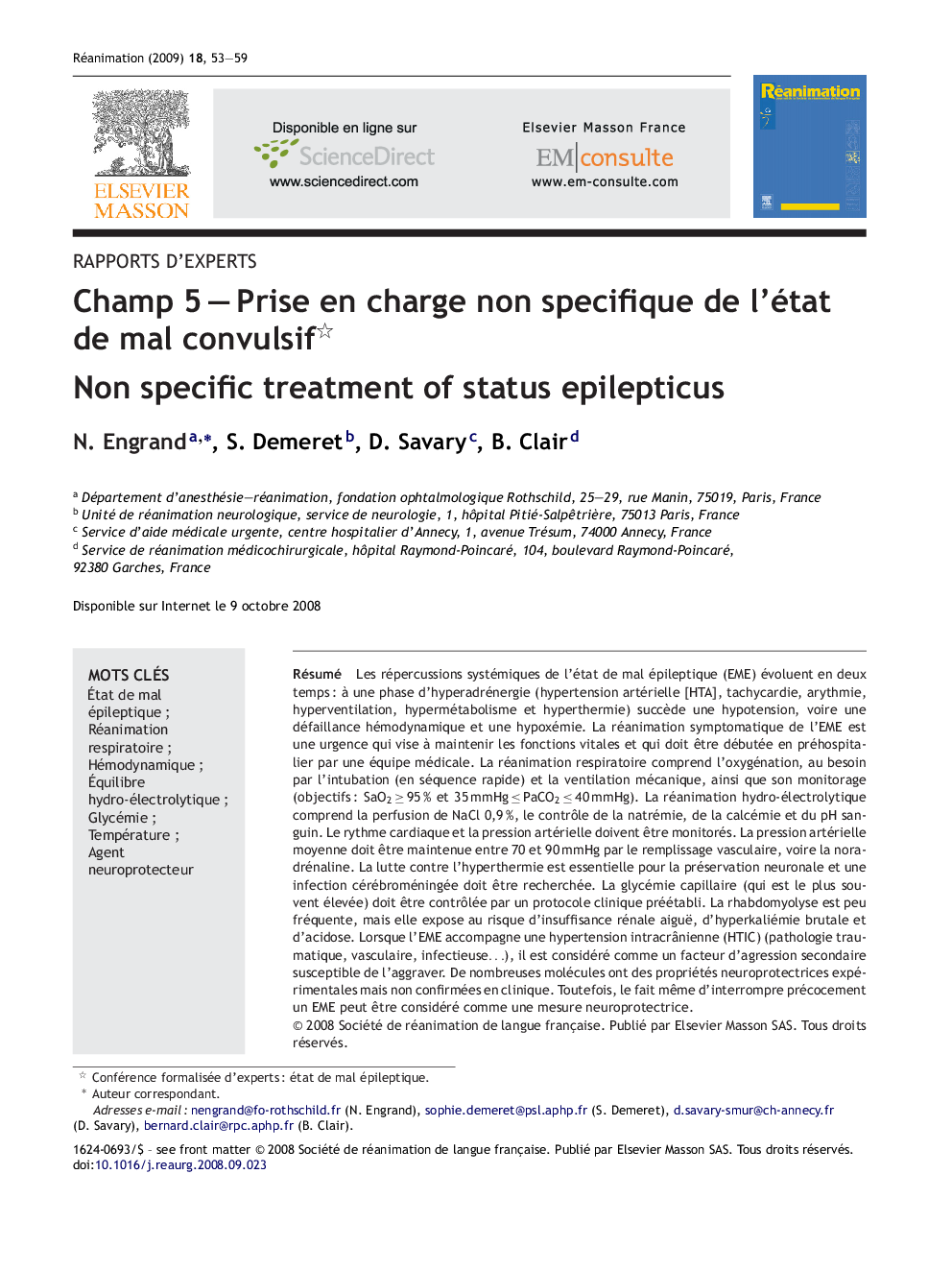| کد مقاله | کد نشریه | سال انتشار | مقاله انگلیسی | نسخه تمام متن |
|---|---|---|---|---|
| 2613667 | 1134899 | 2009 | 7 صفحه PDF | دانلود رایگان |
عنوان انگلیسی مقاله ISI
Champ 5Â -Â Prise en charge non specifique de l'état de mal convulsif
دانلود مقاله + سفارش ترجمه
دانلود مقاله ISI انگلیسی
رایگان برای ایرانیان
کلمات کلیدی
موضوعات مرتبط
علوم پزشکی و سلامت
پزشکی و دندانپزشکی
طب اورژانس
پیش نمایش صفحه اول مقاله

چکیده انگلیسی
The systemic consequences of status epilepticus occur in two steps: the first step is a hyperadrenergic period (high blood pressure, tachycardia, arrhythmia, hyperventilation, hypermetabolism and hyperthermia); the second step is a collapsus period, sometimes with acute circulatory failure and hypoxemia. Supportive resuscitation aiming at restoring vital functions should be undertaken. Ressuscitation must be started immediatly before hospital transfer by a trained emergency team. Respiratory cares include at least oxygen but may also require tracheal intubation (crash induction) and mechanical ventilation. The objectives regarding arterial blood gases are SaO2 â¥Â 95%, and 35 mmHg â¤Â PaCO2 â¤Â 40 mmHg. Hydroelectrolytic cares include intravenous infusion of saline, with control of natremia, calcemia and blood pH within normal ranges. Cardiac rhythm and blood pressure must be monitored. Mean arterial blood pressure must be kept between 70 and 90 mmHg, first using plasma volume expansion, then norepinephrine if necessary. Hyperthermia must be corrected to prevent further neuronal damage. Cerebromeningeal sepsis should be ruled out. Capillary glycemia (most often up-raised) must be corrected using a preestablish insulin infusion algorithm. Rhabdomyolysis is rare but can result in hyperkaliemia, acidosis, as well as acute renal failure. In case of associated intracranial hypertension (traumatic, vascular or infectious injury), status epilepticus is considered as a secondary insult for the brain that may worsen neuronal damage. Numerous molecules have experimental neuroprotective properties but none proved signifiant efficacy in clinical conditions. Nevertheless, convulsion cessation may be considered as a neuroprotective measure.
ناشر
Database: Elsevier - ScienceDirect (ساینس دایرکت)
Journal: Réanimation - Volume 18, Issue 1, January 2009, Pages 53-59
Journal: Réanimation - Volume 18, Issue 1, January 2009, Pages 53-59
نویسندگان
N. Engrand, S. Demeret, D. Savary, B. Clair,